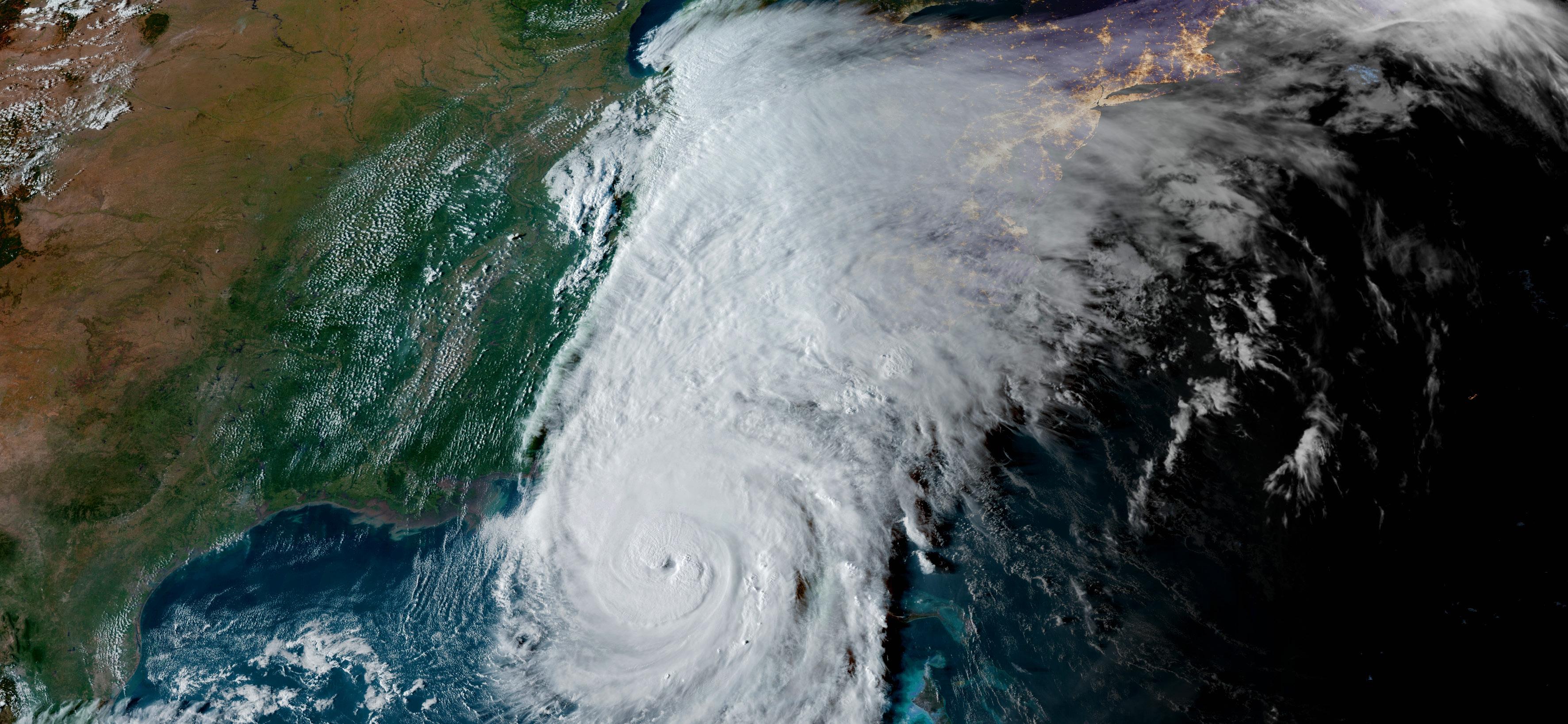
6 minute read
SAW SHOP: In The Eye Of The Storm
By Greg Helton, Chainsaw & Logging Safety Trainer
On September 27, 2024,
Hurricane Helene hit a large portion of Forestry Mutual’s footprint. Areas of Western North Carolina, East Tennessee, Southwest Virginia, South Carolina, and Georgia were devastated by this storm. We have seen historical flooding like it has not been seen in the area for more than 100 years. Creeks and streams that normally you could step over, became raging rivers wiping out everything in its path. The ground, already saturated by the rain that passed through the day before, gave way during the additional rain from the hurricane. Mudslides came down from the mountainsides changing the scope of the terrain. Winding roads that tracked around the mountainside were washed away, leaving the houses still standing inaccessible by vehicles. The less fortunate houses were transported by the rushing water, mud, and debris either to a new resting place or destroyed leaving only a trail of remanence.
Timber that once stood tall on the ridges was carried into the valleys. Large red and white oaks, heavy with acorns and still carrying their summer sails, were laid over by the high winds, toppling powerlines and blocking roads in and out.
Then there are the losses that cannot be replaced. The countless lives that have been taken. The total number may not ever be known. It is one thing to see pictures of areas hit by such devastation, but when you see it firsthand, the impact becomes real.
Through all this devastation, there has been some good seen after the storm. We have seen communities come together, regardless of color, race, religion, or political choice. Neighbors helping neighbors, c hurches helping communities, and strangers who lost everything themselves, helping others who lost everything. We have seen supplies and donations come in from all over the United States.
People not even near the path of the storm coming together to rally support for those affected. We have seen volunteers drop what they are doing, putting their jobs on hold, loading up equipment, and coming out to help. Loggers reach out to help other loggers in a time of need, many of them not asking for anything in return. Farmers haul hay and fencing supplies to farms that have lost their winter supply or their fences to keep their livestock in. To sum it all up, we have seen the Love of God shown through people. That means everything!
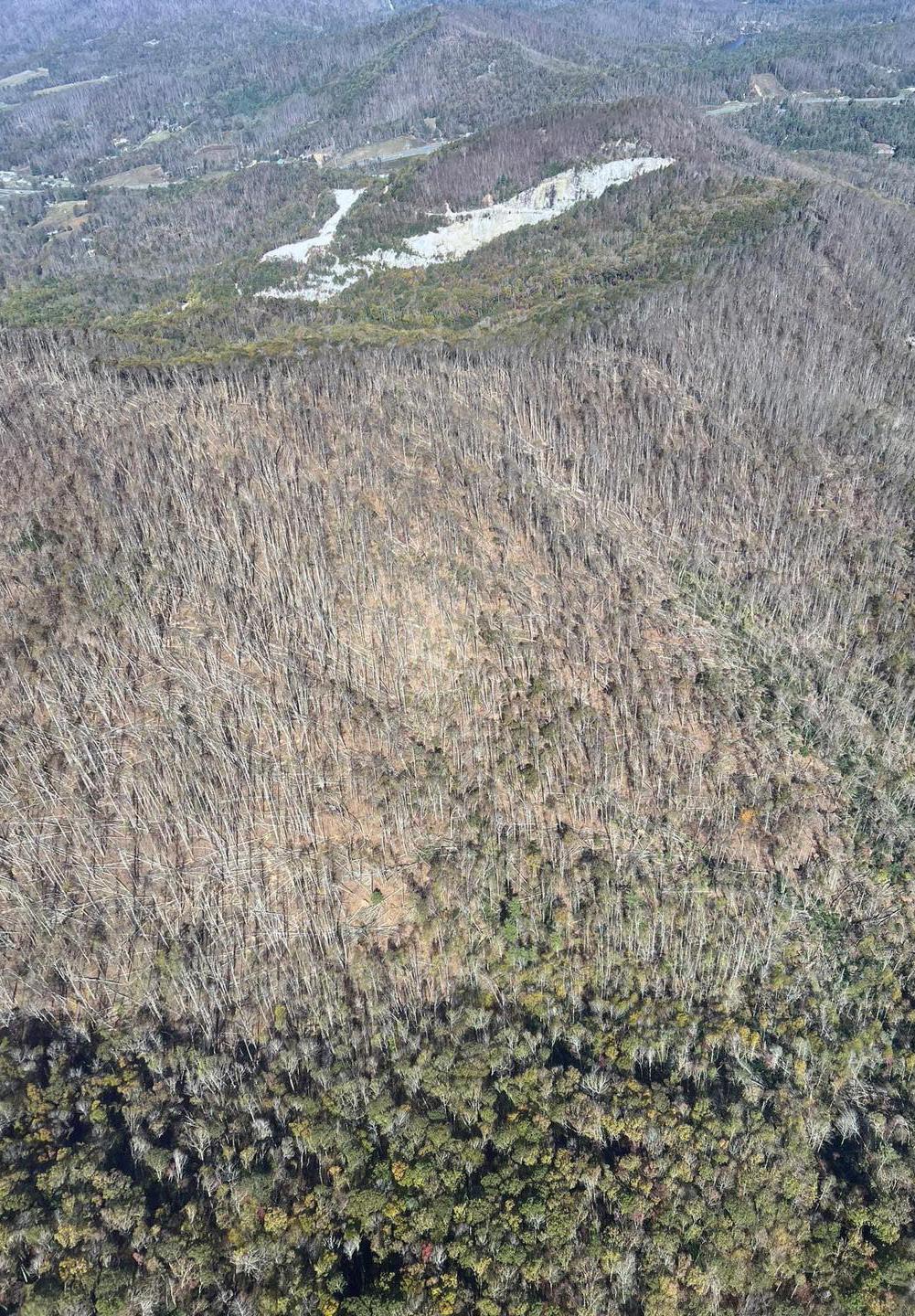
Now there is something we don’t want to see. That is the increase in injuries and lives lost while cleaning up the devastation. We use a picture in the NC ProLogger base class that shows the number of fatalities to date in logging since the start of the ProLogger in 1994. It is interesting to see because each year that has a high number is the year following a major hurricane. We do not want to see that number increase in the coming years. The damage left behind by these storms is one of the most dangerous situations that a chainsaw operator can work in. Whether you are volunteering out of the kindness of your heart or being paid to cut and clean up the damage, the hazards are the same and the risk is still prevalent.
Here are a few tips to help keep chainsaw operators safe while tackling the storm damage cleanup.
1. WEAR YOUR PPE! Don’t let one emergency produce another emergency.
• Protect your legs. Wear chainsaw protective chaps or pants while operating the chainsaw. They will help reduce the risk of severe laceration if the chainsaw comes in contact with your leg.
• Protect your head. There are still numerous overhead hazards that have not been released after the storm. A hard hat will give you protection from falling limbs or debris.
• Protect your eyes. Safety glasses will prevent unwanted particles from entering the eyes and causing injuries.
• Protect your ears. Wear hearing protection while operating the chainsaw. It may not be an injury that is noticed immediately, but in time you will notice the loss of hearing. By then it will be too late.
• Protect your feet. Proper footwear is important while operating a chainsaw. Chainsaw protective boots are recommended.
• Protect your body. Wear high-visibility clothing especially while working around equipment. This allows the operator and other workers to see you better.
2. CHECK THE AREA FOR SAFETY! Before starting to cut:
• Check for downed power lines.
• Check for overhead hazards suspended over the work area.
• Check for other workers in the same area.
• Maintain good communication with each other and equipment operators.
3. CAREFULLY LOOK at the debris you are cutting.
• Watch for the tension and compression. Look for the binds. In storm damage, there may be multiple binds; Top, Bottom, Side, and End Bind.
• Watch your body placement. Anticipate the
direction of movement and position your body out of the swing path.
• Look for spring poles.
4. MAKING THE CUTS.
• Be sure that only one sawyer cuts on a stem at a time.
• Cut slow! Watch the kerf to anticipate the movement.
• Use limb locks and top locks when possible.
• Use the chain brake when not cutting.
• Remember to wrap your left thumb around the handle.
• Maintain a firm grip with both hands on the chainsaw when cutting.
• Secure your footing. A proper stance will help keep you balanced.
• Remember the reactive forces of the chainsaw: Push, Pull, Kickback, and Attack.
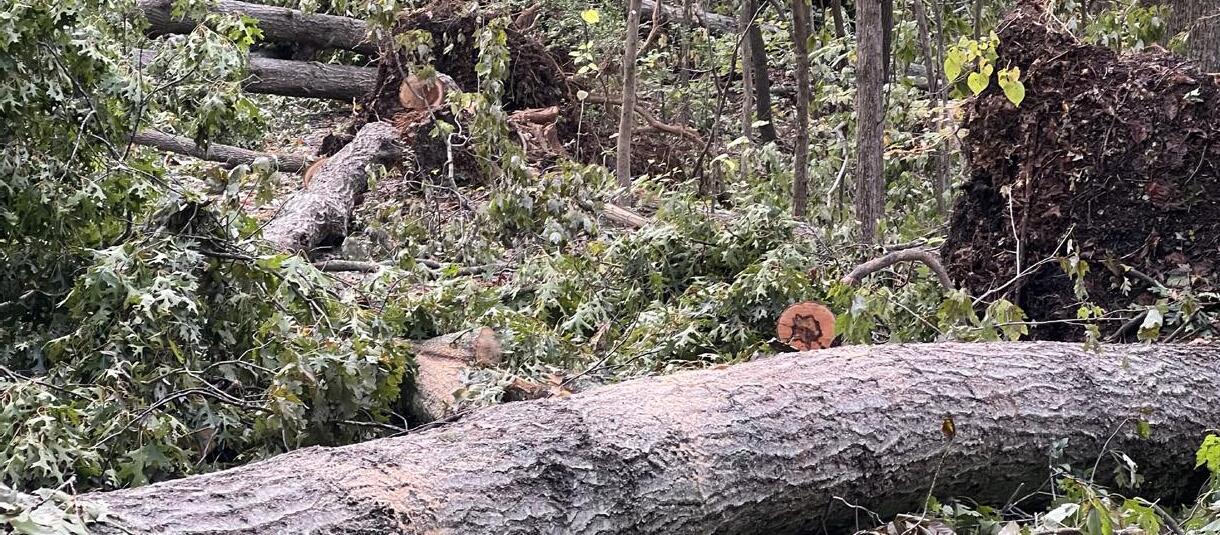
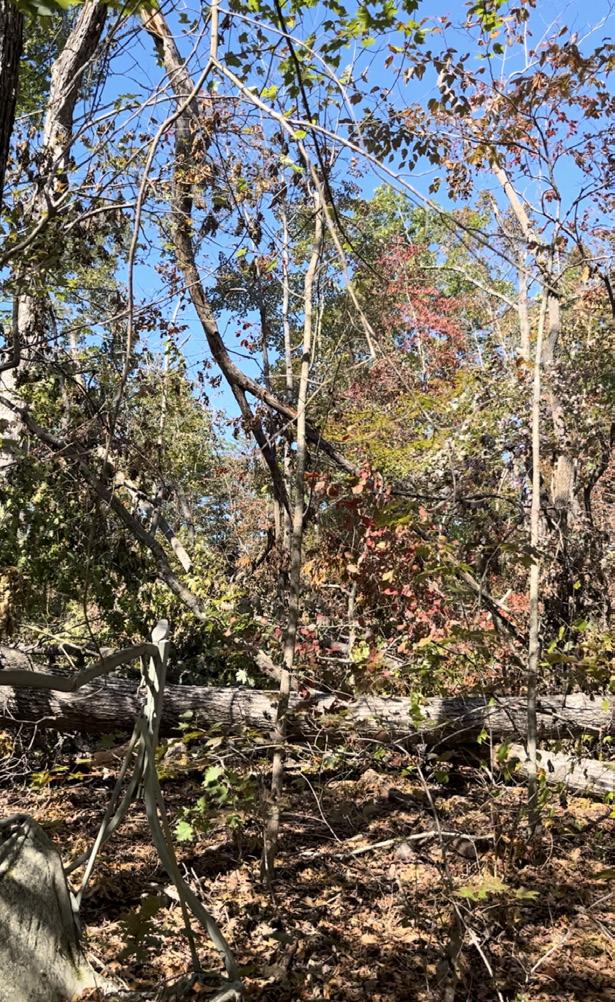
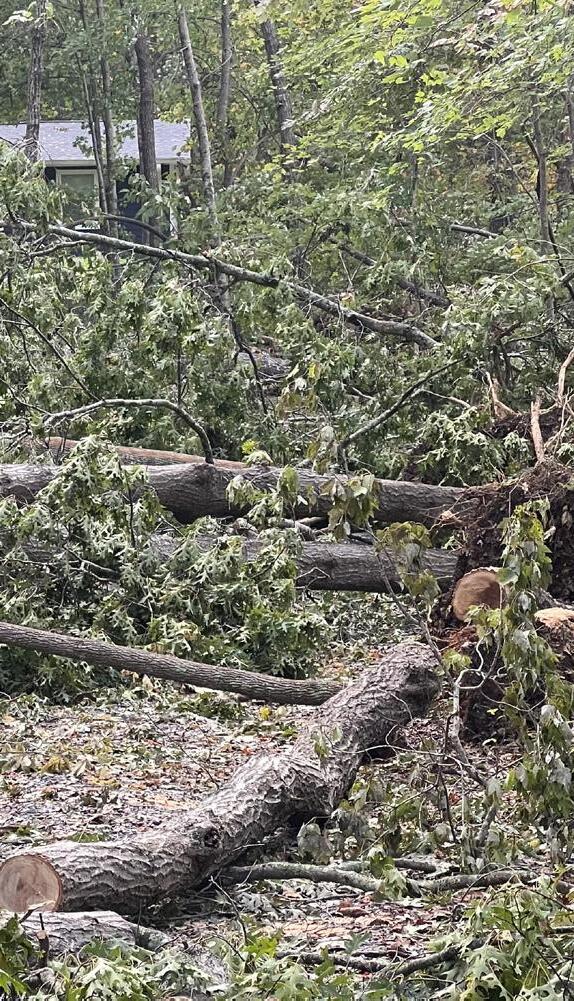
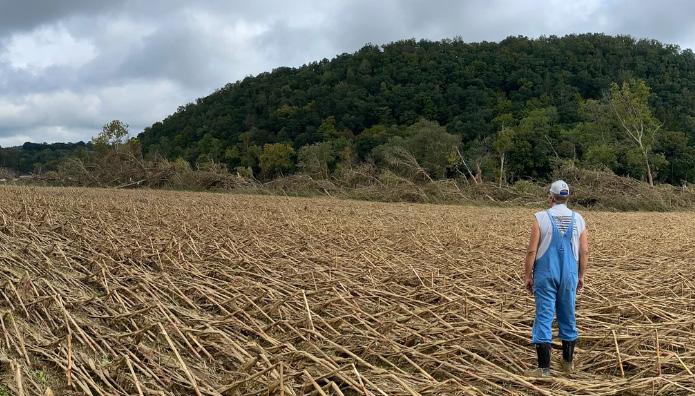
a large portion of Forestry Mutual’s footprint was hit by Hurricane Helene. Areas of Western North Carolina, East Tennessee, Southwest Virginia, South Carolina, and Georgia were devastated by this storm. We have seen historical flooding like it has not been seen in the area for more than 100 years. Creeks and streams that normally you could step over, became raging rivers wiping out everything in its path. The ground, already saturated by the rain that passed through the day before, gave way during the additional rain from the hurricane. Mudslides came down from the mountainsides changing the scope of the terrain. Winding roads that tracked around the mountainside were washed away, leaving the houses still standing inaccessible by vehicles. The less fortunate houses were transported by the rushing water, mud, and debris either to a new resting place or destroyed leaving only a trail of remanence.








